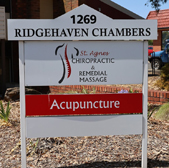F.A.Q
1. Is Chiropractic care safe?
In the words of the New Zealand Government’s Inquiry, chiropractic care is “remarkably safe.” Chiropractic has an excellent safety record. It is the result of a conservative approach to health that avoids invasive procedures or addictive drugs. 1
In relation to the treatment of neck and back pain, studies have shown that a course of chiropractic care was 250 times safer than a course of anti-inflammatory drugs. 2
1 Chiropractic in New Zealand: Report of the Commission of Inquiry. (1979). Hasselberg PD, Government Printer, Wellington, New Zealand
2 Dabbs,V., & Lauretti,W.J. (1995). A Risk Assessment of Cervical Manipulation vs NSAIDs for the Treatment of Neck Pain. Journal of Manipulative and Physiological Therapeutics, 18(8), 530-536
2. What is a Chiropractic adjustment?
A chiropractic adjustment is the skill of using a specific force in a precise direction, applied to a misaligned joint that is fixated, “locked up”, or not moving properly. This adds motion to the joint, helping the joints to gradually regain more normal motion and function.
There are many ways to adjust the spine. Usually the chiropractor's hands or a specially designed instrument called the activator delivers a brief and highly-accurate thrust. Some adjusting methods are quick, whereas others require a slow, constant or indirect pressure.
3. Do I have to have a manual adjustment where I hear that cracking sound?
4. Is Chiropractic care appropriate for children?
Since significant trauma can occur at birth, many parents choose to have their newborns checked for any spinal health related problems. Chiropractic also appears to later assist with learning to walk, riding a bicycle, and other childhood activities which can cause spinal health related problems.
While a bandage and some comforting words can help a skinned knee, the potential underlying structural damage to the child’s spine, skull, pelvis and extremities is the unique domain of a chiropractor.
Many childhood health complaints that are brushed off as “growing pains” may be able to be traced to the spine. Regular chiropractic checkups may be able to identify these problems and help avoid some of the health complaints seen later in adults. Naturally, chiropractic adjusting procedures are modified to a child’s spine, particularly babies.
5. Am I too old for Chiropractic care?
More and more people are consulting chiropractic doctors, especially in their later years. With growing concerns about over-medication and the side effects of combining various prescription drugs, safe, natural chiropractic care is growing in popularity.
Restoring better spinal function can help improve mobility, vitality, endurance, and appetite. Many patients report improvements with arthritic symptoms and other chronic ailments often associated with the aging process. The adjusting technique used by your doctor will be modified for maximum comfort and results. Even patients with osteoporosis, significant arthritis or other ailments can receive gentle chiropractic treatment with the right modifications. As we get older and wiser, the simplicity and effectiveness of chiropractic care becomes more and more obvious.
6. Do Chiropractic adjustments hurt?
In most cases, not at all. At the St. Agnes Chiropractic Centre we use a whole range of techniques to adjust the spine. These range from the very gentle activator (a small hand held instrument) to the drop-piece table to manual adjustments. With manual adjustments you may feel or hear a popping sound from the spinal joints. This is simply caused by a gas release from the joint as spinal movement is restored, such as when a wet glass is removed from a table.
7. What results can I expect?
If you’re new to Chiropractic care, you’ll want to know what type of result you can expect. Individual experience varies from person to person, but most people can expect some benefits soon after beginning care and for these to consolidate further as therapy continues. Statistically too, research shows that Chiropractic care is more effective and economical and also gives longer lasting results for disorders of the spine than other forms of health care.3 4 5
3 Meade TW, Dyer S, Browne W, Townsend J, Frank AO. (1990) Low Back Pain of Mechanical Origin: Randomised Comparison of Chiropractic and Hospital Outpatient Treatment. The British Medical Journal 300: 1431-7
4 Manga P, Angus D et al (1993) The Effectiveness and Cost-Effectiveness of Chiropractic Management of Low Back Pain. Pran Manga and Associates, University of Ottawa, Canada.
5 Shekelle PG, Adams AH, Chassin MR et al. (1991) AHThe Appropriateness of Spinal Manipulation for Low-Back Pain: Indications and Ratings by a Multidisciplinary Panel. Santa Monida, Calif: RAND Copr, 1991
8. Approximately how much does a Chiropractic session cost?
Chiropractors have varying initial consultation fees, depending on the needs of the individual. Some may adjust on first visit, and some may not, or sometimes an x-ray may be taken. Generally first consults are approx. $80 - $120, and regular visits around $48.
9. Do you need a referral from a GP?
Chiropractors are primary healthcare practitioners therefore a referral is not necessary. However more and more GP's are referring to Chiropractors via the Enhanced Primary Care Program (EPC). Also a referral is required for treatment provided to patients from the Department of Veterans’ Affairs.
10. Will Adjustments Make My Spine Too Loose?
No. Only the spinal joints that are fixated or ‘locked up’ receive adjustments. This allows the muscles relax and ligaments to stabilise and heal.
11. Can I Have Chiropractic Care After Back Surgery?
Yes. Rest assured that your chiropractor will avoid the surgically modified areas of your spine. Surgery often causes instability above or below the involved level. These areas will be the focus of your chiropractic care. Also we will use techniques that are quite gentle.
12. Can Patients With Osteoporosis Get Chiropractic Care?
Of course. When developing a care plan, your chiropractor considers the unique circumstances of each patient. There are many ways to adjust the spine. The method selected will be suited to your age, size and condition and in the case of patients with osteoporosis, gentle non-manual techniques will almost certainly be used.
13. Is Chiropractic Safe During Pregnancy?
Absolutely. Spinal adjustments are especially gentle during pregnancy, as far less force is required to correct subluxations (spinal joint restrictions). This is due to the increase in hormones causing significant muscle and ligamentous relaxation.
More than 50% of women experience back pain during pregnancy, especially in the third trimester. Because of the additional weight and a change in posture, there is an increase in stress on the framework of the body.
Chiropractic adjustments do not harm the pregnant mother or her unborn child. In fact, maintaining a healthy spine and nervous system throughout pregnancy can prevent further problems that might occur during and following childbirth.
Once pregnant, some women feel they must stop their chiropractic care. This does not need to be the case. Regular gentle adjustments can make pregnancy easier and less stressful. In addition, delivery may be more comfortable with fewer complications. In fact chiropractic care is a valuable component of a healthy pregnancy and can be used safely throughout.
After the baby is born, chiropractic care ensures that normal spine and pelvic bio-mechanics are restored and that pre-pregnant musculoskeletal status is achieved.
14. Can I Adjust Myself?
There is no doubt that many people can lean or twist in a certain way and get their neck or back to ‘crack’. When a person leans or bends their neck over, 8 joints are actually stretched. Logic says the joint that actually ‘cracks’ is the ‘loosest’ of the eight joints whereas the one that’s causes the problems is likely to be the one that is misaligned or ‘jammed up the tightest’. The fact that the neck ‘cracks’ will cause an immediate relaxation to the muscles in the area so the neck will feel better but this improvement will be quite short lived. Rapidly the body will re-establish the muscle tightness usually within 15-20 minutes and the urge will come again to ‘crack it again’. If your Chiropractor adjusts the correct ‘jammed’ vertebra, the relief will be much longer lasting as the cause of the neck pain has been removed.







